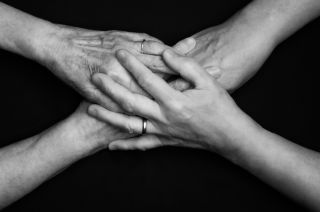Empathy
Empathy, Art Appreciation, and Collectors: A Connection?
Is the trait of empathy important in appreciating art and collecting it?
Posted November 2, 2023 Reviewed by Michelle Quirk
Key points
- The trait of empathy has been associated with greater art appreciation.
- If the association is substantiated, empathy may be connected to collecting art as well.
- To truly penetrate this connection, the art and science worlds require broader examination.

Very recently (October 16, 2023), I gave Neurology Grand Rounds at Indiana University. My topic was “Visual Art and Medicine.” In my presentation, I included historical research as well as current studies. My goal was to present how empathy might be a magical link to art appreciation and, thereby, collectors of art.
Recent Research
Recent research does suggest a relationship. One groundbreaking study indicated that medical students immersed in art for a time displayed a noticeable uptick in empathy (Mangione et al., 2018). Such an increase in empathy is undeniably invaluable in patient care. Another intriguing exploration suggested that using audible and visual art could alleviate pain and stress. Those who possessed deeper empathy resonated more with the music's soothing melodies (Fekete et al., 2021).
On the subjective side, Sara Konrath, social psychologist and associate professor of Philanthropic Studies, Indiana University–Purdue University Indianapolis, said in a conference at the Minneapolis Museum of Art, “The arts can help to expand our minds and hearts so that we see our own and others’ worlds better.” At the same conference, Terry Wu, neuroscientist and founder of Why The Brain Follows, expressed a similar feeling: “Art plays a unique role in re-establishing humanity in this technology-dominated world.”
The intriguing aspect? The way our emotions intertwine with different kinds of art, such as both visual and audible, seems strikingly similar. This prompts the question: Does our inherent ability to feel what others feel influence our love for art? If so, this notion suggests a profound bond between empathy, art, and collectors of art.
Emotional Bridge From an Artist's Vision to an Observer's Heart
Empathy is sensing another's emotions—be it humans or nonhuman entities like art pieces. This perspective hints at a potential emotional bridge from an artist's vision to an observer's heart. The challenge, however, is weaving this notion into concrete evidence. I looked for a study that satisfied this requirement. One (Pelowski et al., 2018) attempted to bridge this gap by analyzing the emotions shared and understood between artists and observers of installation art.
In Pelowski's research, three distinctive art installations were scrutinized. One radiated uplifting vibes, another flooded viewers with uncertainty, and the last bombarded participants’ senses with clashing noises and visuals. The study results indicated the viewers synced emotionally with the artists in two out of the three artworks. Yet, a direct correlation between high empathy and deeper art understanding remained elusive.
Despite its interesting findings, the results of Pelowski's research represent only the beginning of the search to answer the question or whether empathy is related to appreciation of art. To truly penetrate this connection, the art and science world requires broader examinations, including more art pieces and participants.
In conclusion, while one study suggests that an artist's intentions can shift through to viewers, the grand mystery continues to vex us. Is our empathetic core truly intertwined with art appreciation, and therefore, why we are attracted to collecting art?
References
Mangione, S., et. al. (2018). Medical Students’ Exposure to the Humanities Correlates with Positive Personal Qualities and Reduced Burnout: A Multi-Institutional U.S. Survey, J Gen Intern Med. 33: 628.
Fekete, A., Maidhof, R. M., Specker, E., Nater, U. M., & Leder, H. (2021). Does art reduce pain and stress? PLOS ONE, 17(4).
Pelowski, M., Specker, E., Gerger, G., Leder, H., & Weingarden, L. S. (2020). Do you feel like I do? A study of spontaneous and deliberate emotion sharing and understanding between artists and perceivers of installation art. Psychology of Aesthetics, Creativity, and the Arts, 14(3), 276–293.


